Heads up: some of the links on this site are affiliate links. If you click and make a booking or purchase, I’ll make a commission (at no extra cost to you). I partner with companies I personally use and the $$ goes towards creating more awesome, free travel content.
After spending a couple of chaotic days in Cairo, Aswan was such a welcomed interlude on my trip through Egypt. The overall pace in Aswan is much more relaxing and tranquil than Cairo or Luxor and much of your time here will be spent on the water taking boat rides to villages and temples.
I booked a hotel right on the Nile and loved waking up to the views here. Sunsets along the Nile are magical and a felucca ride on the water is a great way to cap off your day in Aswan.
Aswan is a popular base for beginning Nile cruises or for taking day trips to Abu Simbel. However, there are also lots of places to visit in Aswan so make sure you allow some time to explore the city. Definitely do not skip it- twas one of the highlights of my trip.
To give you some inspiration, here are some of the best things to do in Aswan.
Top Things to Do in Aswan, Egypt
Nubian Village
A popular experience in Aswan is to take a boat ride to the Nubian Village. The Nubian people are indigenous to the region of southern Egypt and northern Sudan. They LOVE colors! Their villages are painted in all colors of the rainbow and each color has a specific meaning. Blue is for the ocean, yellow is for the desert etc etc.
After a relaxing boat ride along the Nile you’ll arrive at the artsy, colorful village, where you can go inside a Nubian family home, learn about Nubian culture and traditions, enjoy a tasty lunch, snap photos of the colorful murals and shop for souvenirs and spices. The Nubians have their own language, but some of them have learnt English and will approach you trying to sell souvenirs or offer henna tattoos. If you don’t want to purchase something, just say a polite “no thank you”.
On my visit to the Nubian village we went inside the home of the Rabih family where we drank hibiscus and ate some salty snacks. It’s polite to tip the family for their hospitality, so make sure you bring some cash. The Nubian families keep young crocodiles caged in their homes for good luck, and while it’s not something I condone, it was interesting to see the way they live.
Boat Trip to Philae Temple
If there’s one thing you must do in Aswan it’s take a boat trip to Philae Temple. The temple was initially located near the First Cataract of the Nile near Aswan but the area was gradually flooded after the construction of the Aswan Low Dam in 1902.
Before the completion of the Aswan High Dam, UNESCO campaigned to save this and several other important places, including Abu Simbel temple.
Between 1972 and 1980 a rescue operation was carried out to transfer Philae Temple from its original place on Philae Island to Agilika Island, 12 kilometers south of Aswan. Agilika was leveled to resemble the original island and the temples were carefully restored to their former glory.
The buildings that you see today were mainly built by the Ptolemies and completed by the Roman Emperors. A major highlight is the Temple of Isis, which was built during Egypt’s Greco-Roman period and is dedicated to Isis, Horus and Osiris. Philae in Greek or ‘Pilak’ in ancient Egyptian, means ‘the end,’ defined the southernmost limit of Egypt.
The boat ride to Philae is very relaxing and you’ll pass some beautiful scenery along the way. It’s a truly beautiful setting and for sure one of the best things to do in Aswan.
Unfinished Obelisk
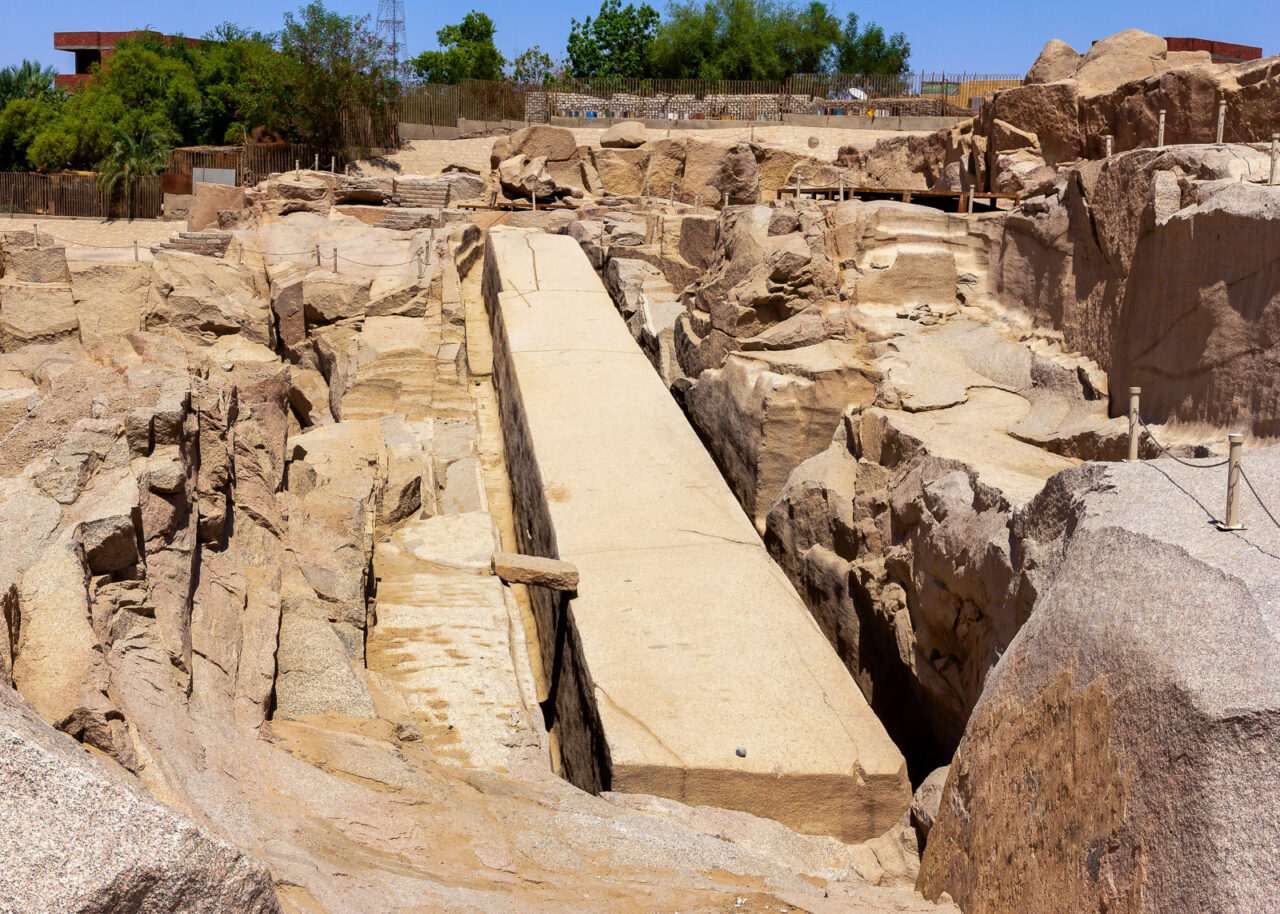
As the name suggests, the Unfinished Obelisk was never completed, but it’s still a very popular tourist sight to visit. The obelisk was commissioned by Hatshepsut in 1508–1458 BC and is the largest obelisk to ever be built (that we know of). If completed, it would have measured around 41.75 meters (137.0 ft).
“Why was the Unfinished Obelisk never finished?” you may ask. Sadly, its creation was abandoned because of cracks that began to appear in the granite.The bottom side of the obelisk is still attached to the bedrock.
Elephantine Island
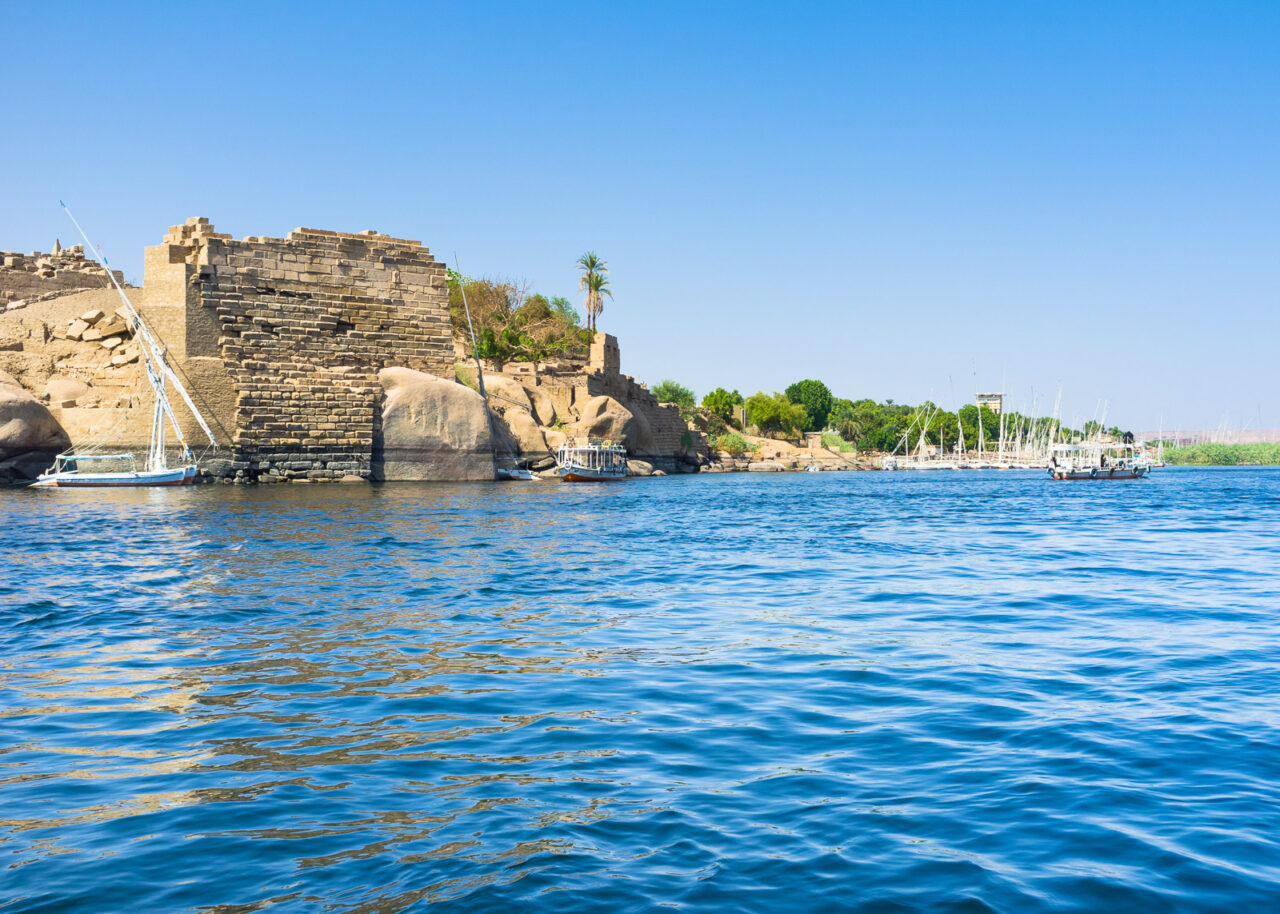
Elephantine Island is located on the western side of the Nile, opposite the city of Aswan. The island is home to several important archaeological sites, two Nubian villages and the luxurious Movenpick Aswan hotel. Visitors can reach the island’s shores by ferry or by taking a felucca ride from the banks of the Nile.
A popular attraction here is the Nilometer of Satet Temple, which was used to measure the Nile’s water levels, particularly during flood season. Elephantine is also home to Aswan Museum, which contains many historical artifacts, including ceramics, weapons and utensils that have been discovered around the grounds of the island.
Light and Sound Show at Philae Temple
If you’re looking for things to do in Aswan at night, you may want to check out the Aswan Light and Sound Show. It’s often included as an optional extra on many tour packages and usually takes place around 7 or 8pm.
With the help of lighting and sound effects, the show brings to life the tales of Goddess Isis and God Osiris, as well as the fascinating story of Philae Temple. Adult tickets cost around $19 (for children it’s $11) and the show is available in 10 languages.
Felucca Ride on the Nile
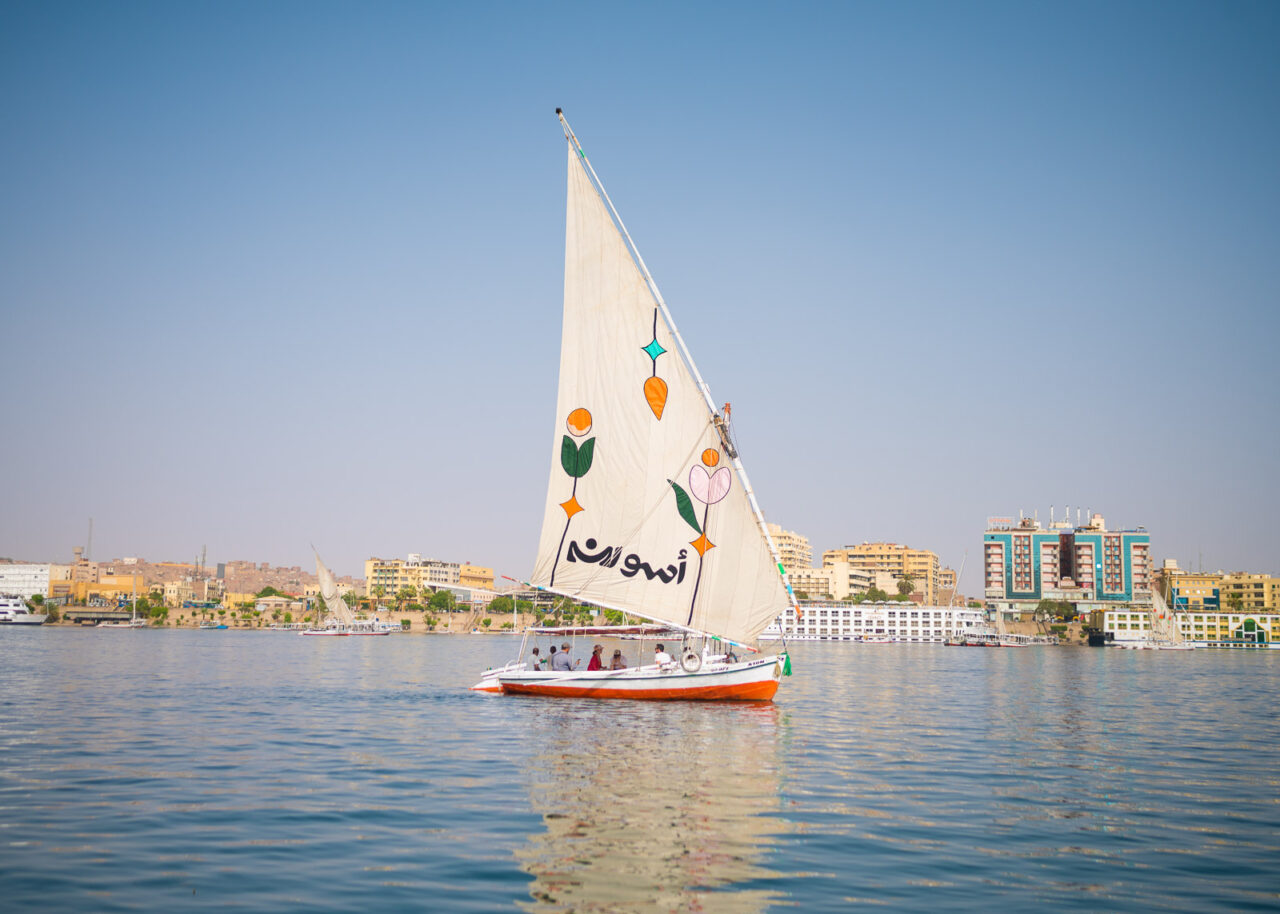
A bucket-list Egypt experience is a felucca ride on the Nile. The best time to take a felucca ride is right before sunset, so you can enjoy the orangey-pink hues of the sun going down while sailing down the Nile.
A felucca is basically a traditional wooden sailing boat and they’re very popular in both Aswan and Luxor. They usually have a crew of two people and can accommodate about ten passengers.
Locals will often stand by the entrances to the hotels and try to sell guests felucca rides. If you want to go on one, you can barter on the price. Many package tours will also include a felucca ride as an optional extra, or you can book online with a company like GetYourGuide or Viator.
Temple of Kom Ombo
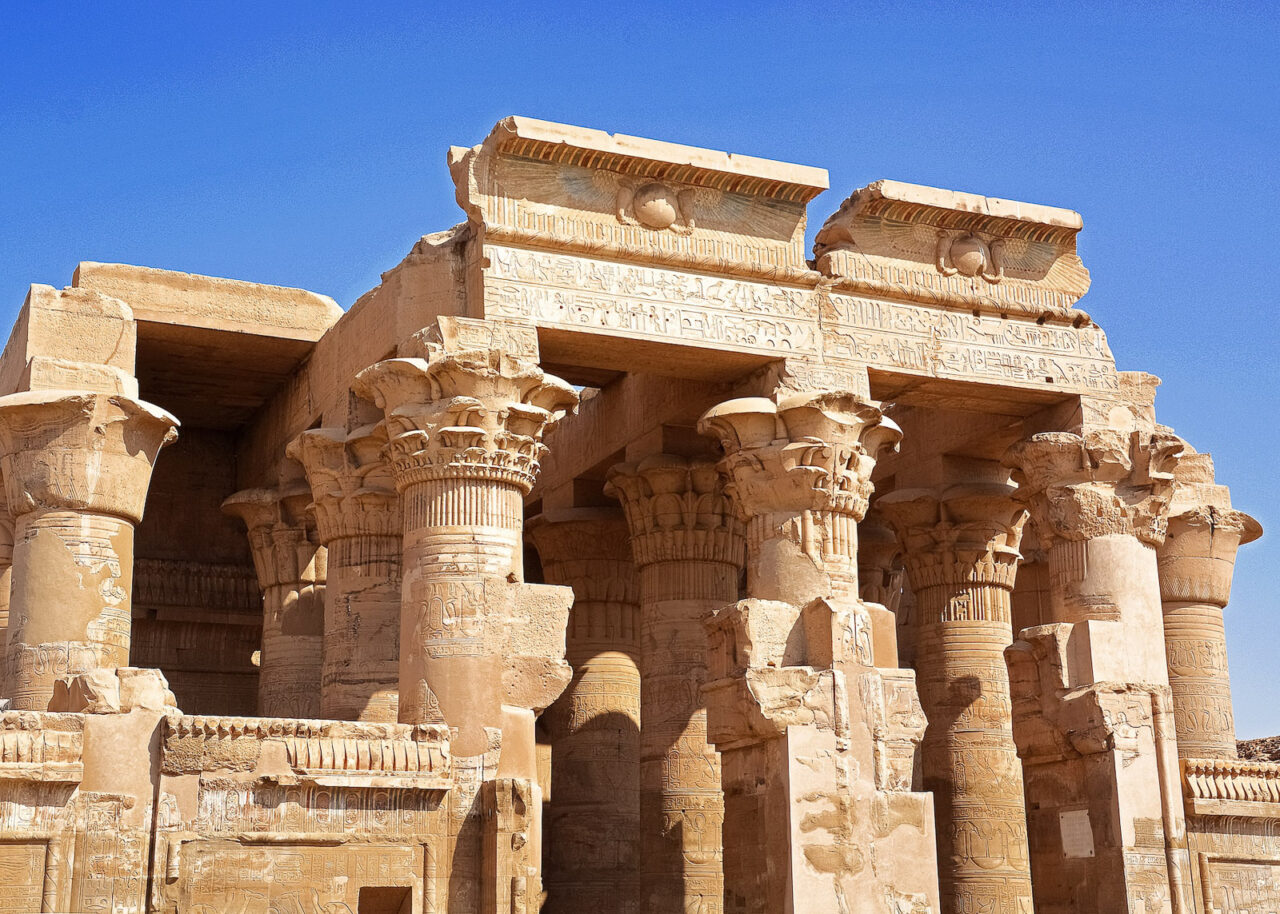
Temple of Kom Ombo is located about 30 miles (48km) north of Aswan and is popular as a day trip. If you’re planning on taking a Nile cruise, this will usually be one of the first stops after leaving Aswan.
The temple was built during the Ptolemaic dynasty, 180–47 BC and is actually a double temple – one temple is dedicated to Sobek the crocodile god, while the other is dedicated to Horus the falcon-headed god. Everything is perfectly symmetrical along the main axis and the courts, halls and sanctuaries have been duplicated for the two gods.
A highlight of the temple is the Crocodile Museum, which displays hundreds of mummified crocodiles that were found in the area. The Nile used to be infested with crocodiles and the ancient Egyptians believed that if they worshiped them, they wouldn’t be attacked.
Aswan High Dam
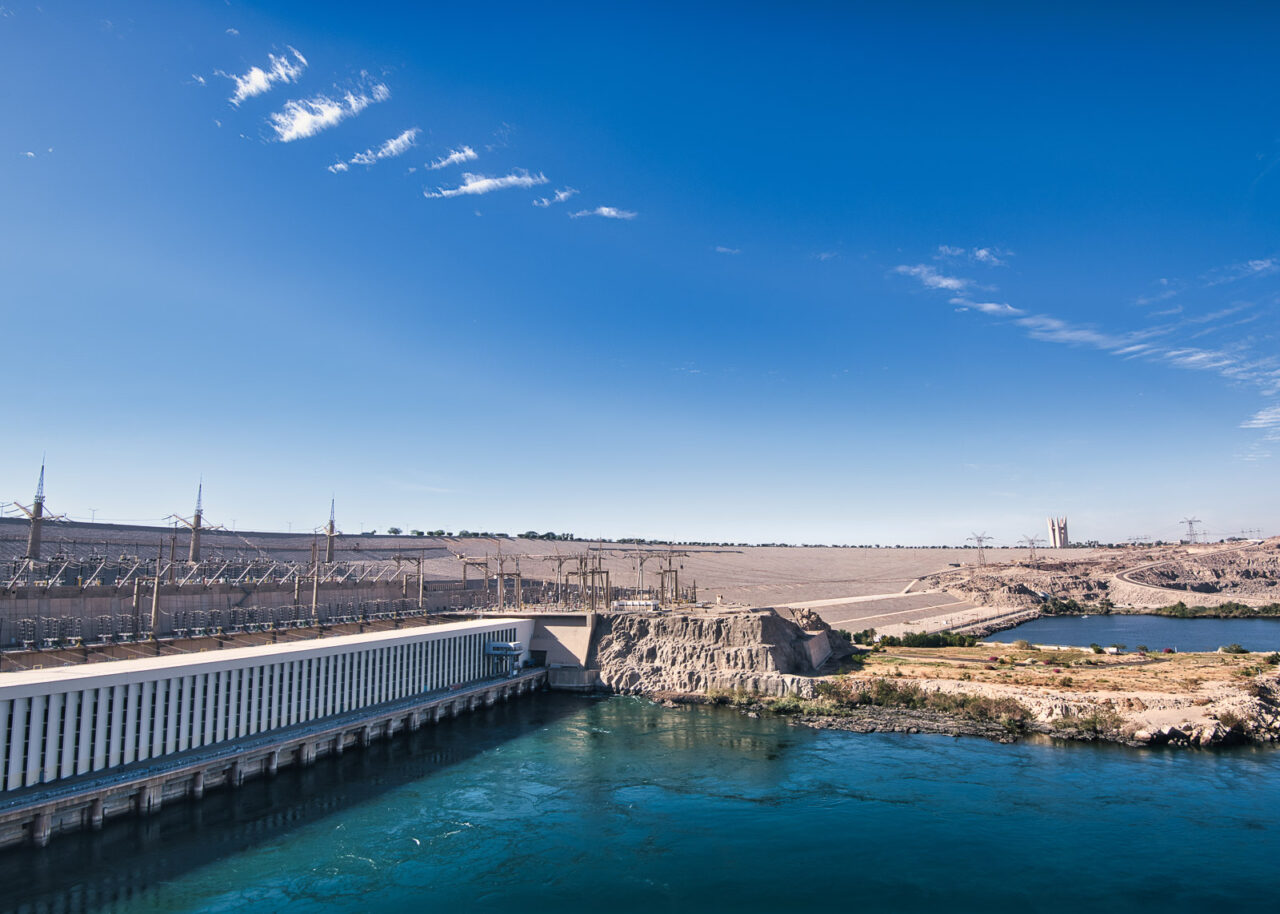
Aswan High Dam is a dam that was completed in 1970 at a cost of $1 billion to bring the devastating Nile floods under control.
Built across the Nile River from some 57 million cubic yards of earth and rock, the dam impounds the floodwaters and is a major source of renewable energy. Each year, the dam’s 12 turbines produce as much as 10 billion kilowatt-hours of power.
The giant reservoir created by the dam was named Lake Nasser in honor of President Nasser, who initiated the project. Lake Nasser measures around 300 miles long and 10 miles wide and the water inside it is shared by both Egypt and Sudan.
Although Aswan High Dam has provided a major boost to Egypt’s economy, there have been some environmental, archeological and human costs. The creation of Lake Nasser meant that the Abu Simbel temples had to be relocated and around 90,000 Egyptian peasants and Sudanese nomads had to be resettled. It also resulted in a decrease in the fertility of agricultural lands in the Nile delta, which used to benefit from silt that was deposited by the Nile floods.
Day trip to Abu Simbel
Abu Simbel was one of the highlights of my trip so it’s definitely worth doing as a day trip from Aswan. You can fly to Abu Simbel from Aswan, or you can get there by land with either a shared tour or a private driver. I’ve written an extensive guide on how to get to Abu Simbel if you want to know more.
Flights from Aswan to Abu Simbel take around 45 minutes and cost around $70 each way, so $140 round trip. By land the journey takes around 2.5 to 3 hours depending on how fast your driver goes. Flying is faster, but it’s more expensive and you also have to factor in the time taken to get to and from the airport.
To get to Abu Simbel by land you can take a shared tour or a private tour. Shared tours are the cheapest option but they depart very early in the morning and you’ll be visiting Abu Simbel along with bus loads of people. Abu Simbel can get very crowded since all the shared tours arrive at once, so you’ll have trouble snapping photos without people in them! The best option is to do what I did and book a private driver with or without a guide. You can depart later, arrive later and avoid the crowds.
Abu Simbel is a very impressive historical site that consists of two temples built by King Ramses II to celebrate his victory against the Hittites during the Kadish Battle in 1274 BC.
The temples were carved out of a sandstone cliff on the west bank of the River Nile, but had to be moved to higher ground due to damage from the rising waters created by the Aswan High Dam. The temples were painstakingly cut away from the cliff and moved to their new spot in a project initiated by UNESCO and the Egyptian government.
The main temple (the most famous one) is dedicated to King Ramses II and the sun gods Amon-Re, Ptah and Re-Horakhte. It features four 66 ft-tall seated figures of Ramses II and between his legs stand figures of some of his favorite children. The smaller temple is dedicated to Nefertari for the worship of the goddess Hathor. The temple features 35-foot (10.5-metre) statues of Ramses II and Nefertari, his favorite wife.
Old Cataract Hotel
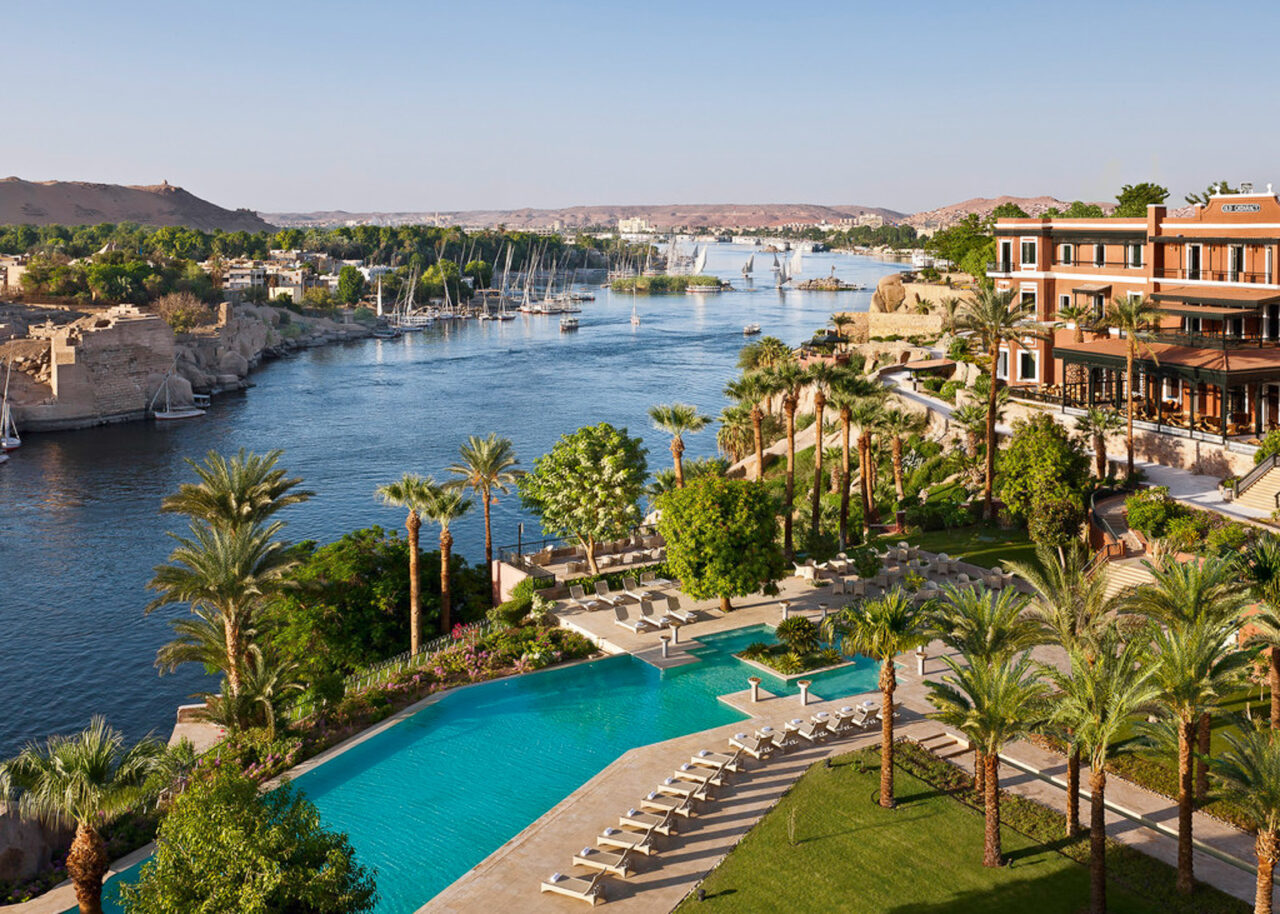
The Old Cataract hotel is an iconic 5-star hotel situated on the Nile opposite Elephantine Island. Dating back to 1899, the hotel has welcomed many famous guests over the years, including Princess Diana, Winston Churchill and Agatha Christie, who stayed here while she was writing Death on the Nile.
Years later, the hotel hosted the entire cast of the film adaptation of Death of the Nile, starring Peter Ustinov, David Niven, Mia Farrow, and Angela Lansbury.
While it’s a gorgeous place to stay, you don’t have to book a room at the hotel to experience its splendor. Instead you can make a reservation at the hotel’s restaurant, 1902, for the ultimate fine dining experience.
Shop for Perfumes
If you’re looking for a nice souvenir to take home from Egypt you may want to consider stopping by one of Aswan’s perfume shops. Aswan is known for making essential oils and supplying the oils that go into famous fragrances by designer brands.
Perfume is made of essential oils that are blended together and they’re usually watered down with alcohol and water. The ratio of essential oils to alcohol determines the price of the perfume. In Aswan, you can buy the undiluted essential oils and just rub them on your skin. They may seem expensive, but remember, you’re getting an undiluted version.
Upon arriving at the store you’ll usually be taken to a room where staff will provide you with hibiscus or tea and explain how perfume is made.
You’ll have the chance to smell some of the essential oils, which carry names such as “Ramses II” or “Queen Cleopatra”. The bottles are beautiful and you can choose from different sizes. If you don’t want to buy anything after the demonstration then don’t feel obligated to make a purchase. If you do want to buy some perfume, feel free to haggle with them on the price.
Nubian Museum
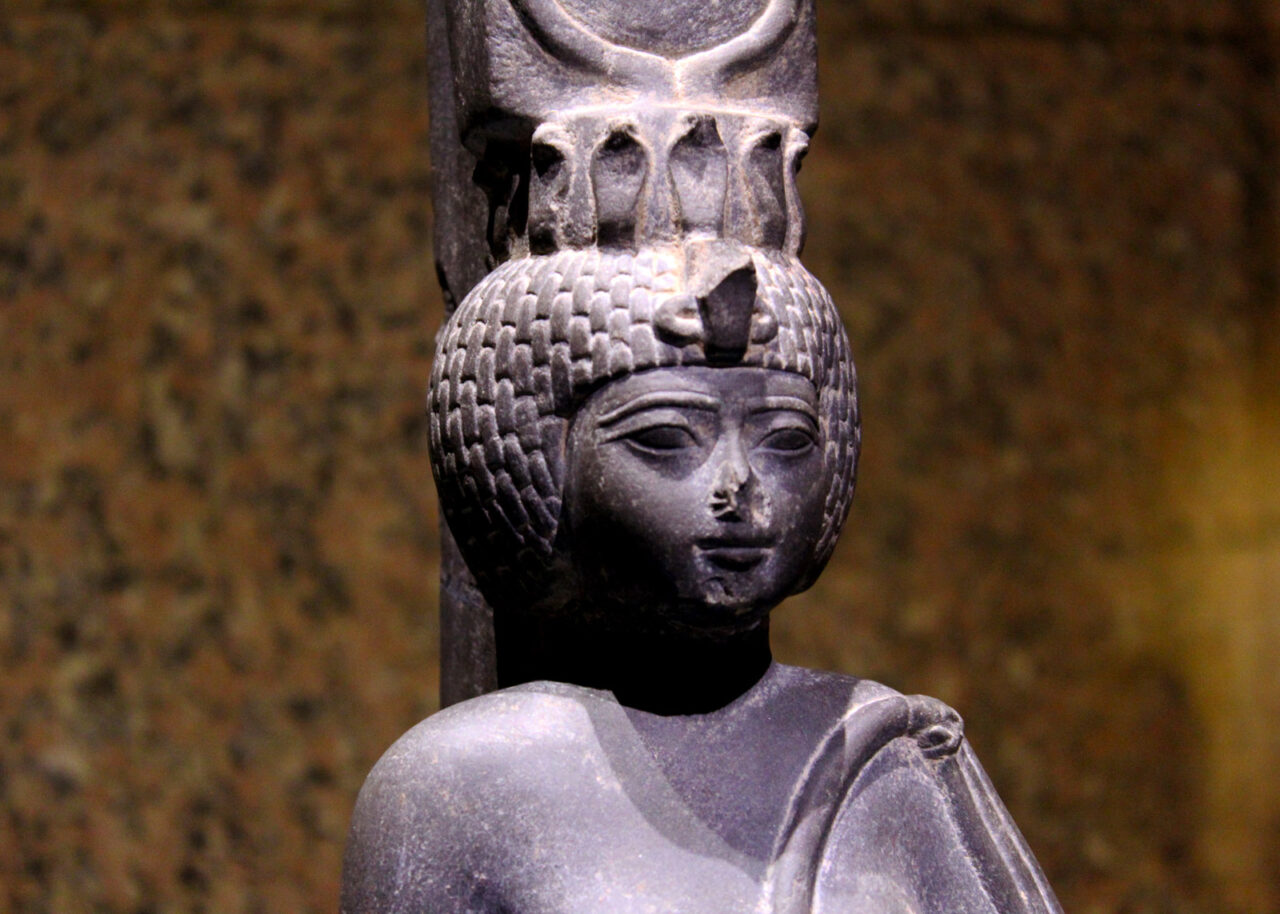
The Nubian Museum is an archeological museum dedicated to the history of the Nubian people and their culture. Opened in 1997, the Nubian Museum was a result of a UNESCO international campaign to save the monuments of Nubia from the rising waters of Lake Nasser.
In total, the museum and its surrounding botanical gardens cover a total area of 50,000 square meters. Displays are spread over three floors and trace Nubian life from the earliest settlements to the present day.
Aswan Market
For a taste of local life, head to Aswan souk, which sells all sorts of Egyptian and African goods. The market is on a street that runs parallel to the Nile Corniche and is filled with stalls selling herbs and spices, clothes, perfumes, carpets, household goods and other wares.
It’s usually quite crowded and is popular with both locals and tourists. As with any market, make sure you have some cash and remember to haggle on the prices.
Dinner at El Masry
El Masry is a local restaurant serving delicious Egyptian cuisine, which was recommended to me by my guide at Abu Simbel. In traditional Egyptian style, your meal will be served with an array of small dishes including hummus, bread, salad, rice, tajine and an orzo pasta soup. Staff are friendly, the food is tasty and you’ll leave feeling very, very full!
Where to Stay in Aswan
Aswan has a number of great hotels at very affordable prices. They’re much cheaper than the hotels in Cairo. Here are some good options for your stay:
Sofitel Legend Old Cataract
The Old Cataract is an iconic hotel that sits on a pink granite cliff overlooking the Nile and Elephantine Islands. This 19th century Victorian palace has been frequented by the likes of Agatha Christie and King Fouad, as well as many other royals and dignitaries. The hotel boasts an outdoor infinity pool, an indoor pool, a fitness center, spa and several restaurants. A highlight is the hotel’s 1902 restaurant, which serves French cuisine paired with fine wines selected by the hotel’s sommelier.
Obelisk Nile Hotel
During my time in Aswan I stayed at the Obelisk Nile Hotel, which is located in the center of Aswan on the banks of the Nile. The hotel features 100 rooms spread around a tranquil garden and some have Nile views. I loved waking up to a view of the Nile – it was so relaxing and peaceful! There’s also a decent buffet breakfast, a swimming pool and a riverside bar with comfy chairs facing the Nile. I really enjoyed watching the sunset here after a day of sightseeing.
Kato Dool Nubian House
If you’d prefer to stay in the Nubian village, Kato Dool is a colorful guest house painted in the Nubian style. Located on the west bank of the Nile about a drive from the airport, the hotel offers 18 vibrantly designed rooms, the majority of which have a Nile view.
Kato Dool also offers free WiFi, a 24-hour front desk, a restaurant, free private parking, a shared lounge and a garden. Guests can enjoy tasty Nubian cuisine in the restaurant or lunch at the Kato Dool Felucca with views of the Nile.
Getting to Aswan, Egypt
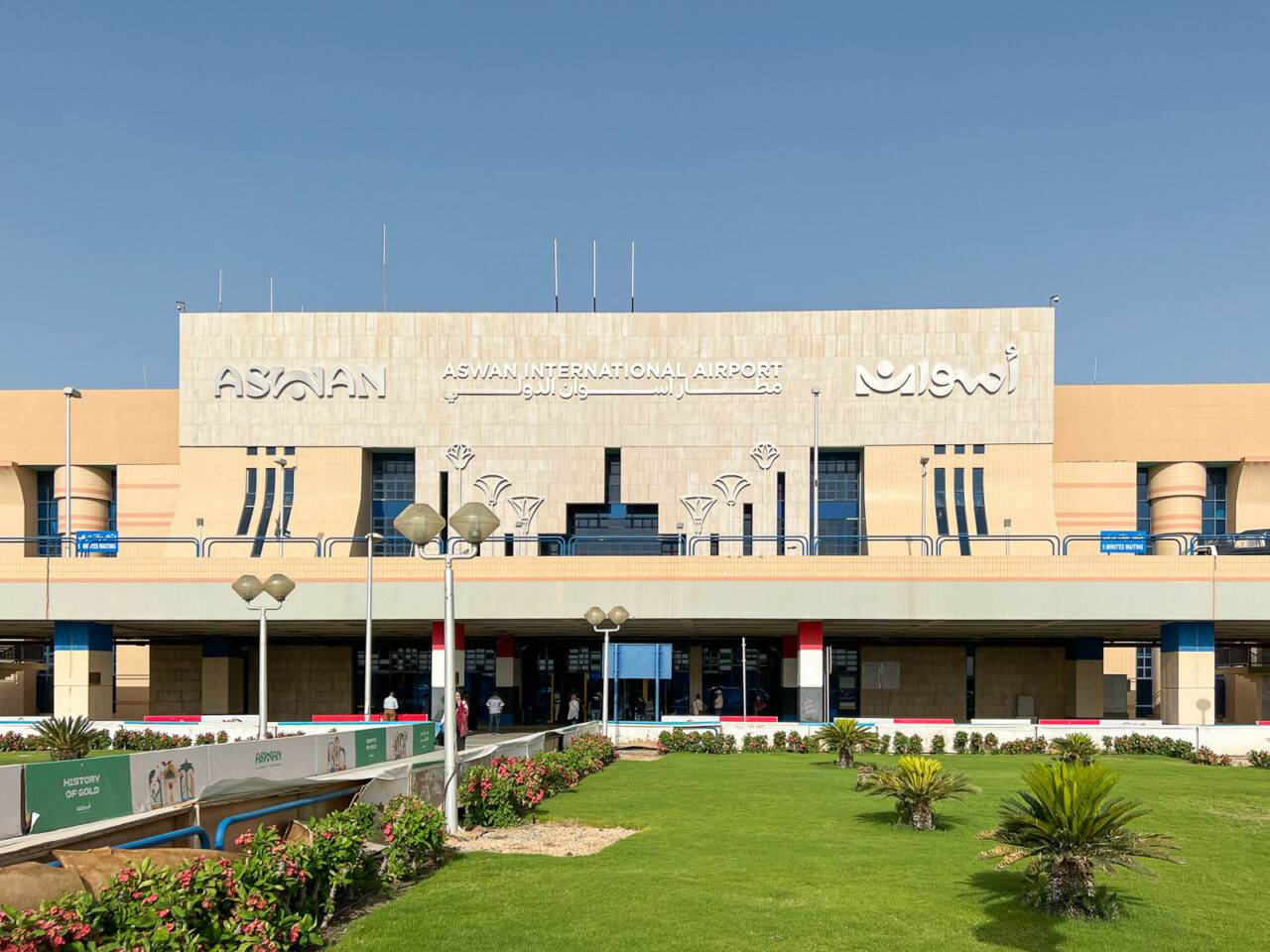
The two main ways to get to Aswan are either flight or train. Flying is my preferred option because it’s much quicker and far more comfortable. While I’m always up for an adventure, I like my comforts these days and I’d prefer to save time and arrive feeling well-rested.
The flight time between Cairo and Aswan is about 1 hour 20 minutes, whereas the sleeper train between Cairo and Aswan takes around 13 hours and it can often depart an hour or so late. Lots of people like to do the deluxe sleeper train for the experience and also because it saves them money on a night’s hotel accommodation. However, you may not get the best night’s sleep.
Flying to Aswan
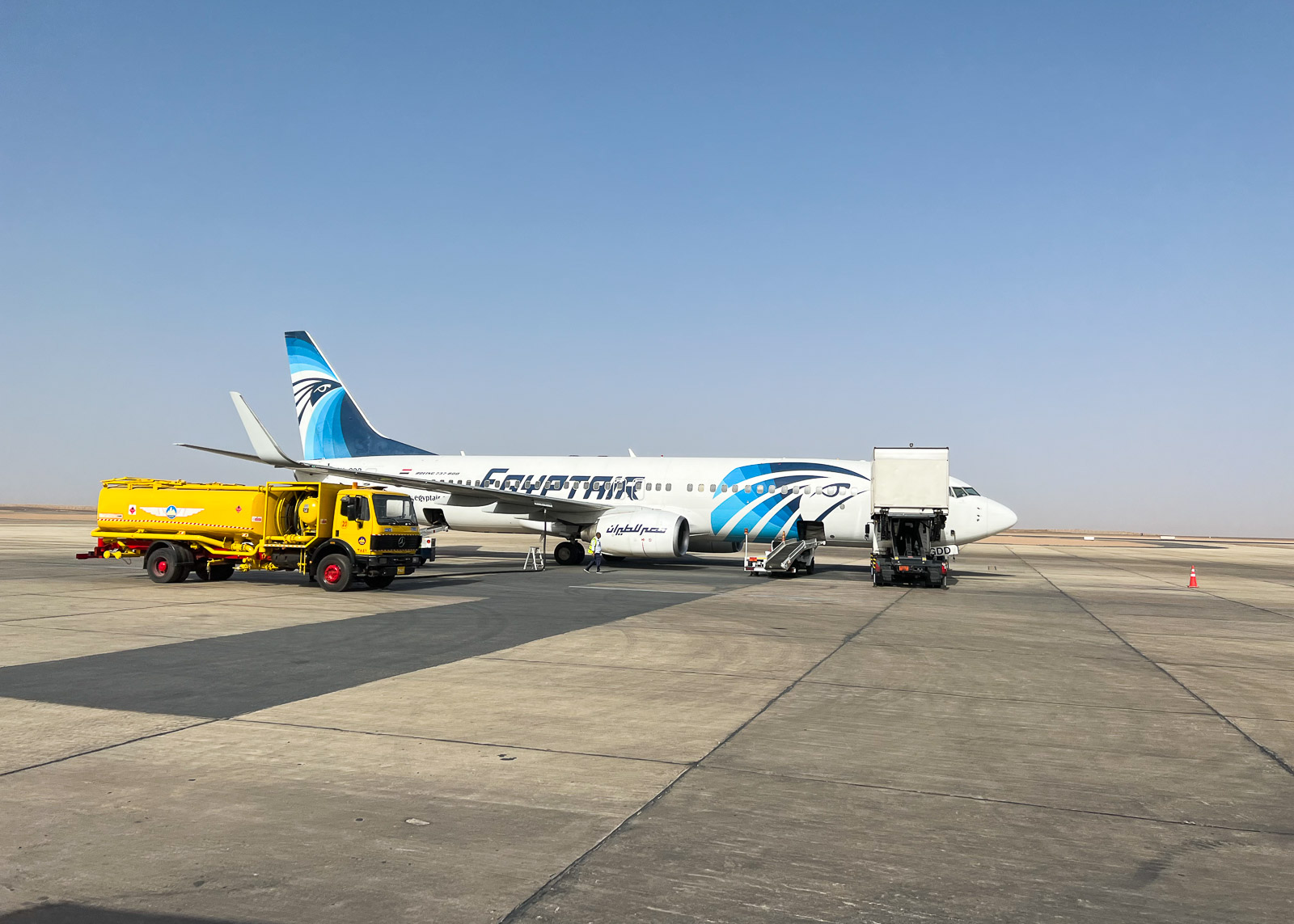
Nile Air and Egyptair operate flights from Cairo to Aswan. Expect to pay about $70 one-way.
I flew from Cairo to Aswan on an early morning flight with Egyptair and the flight was very comfortable. It was a quick journey with no delays and Aswan airport is small, so I was out of the airport within a few minutes. Aswan airport is about 19km from downtown Aswan and the taxi journey takes around 20-30 minutes.
Train to Aswan
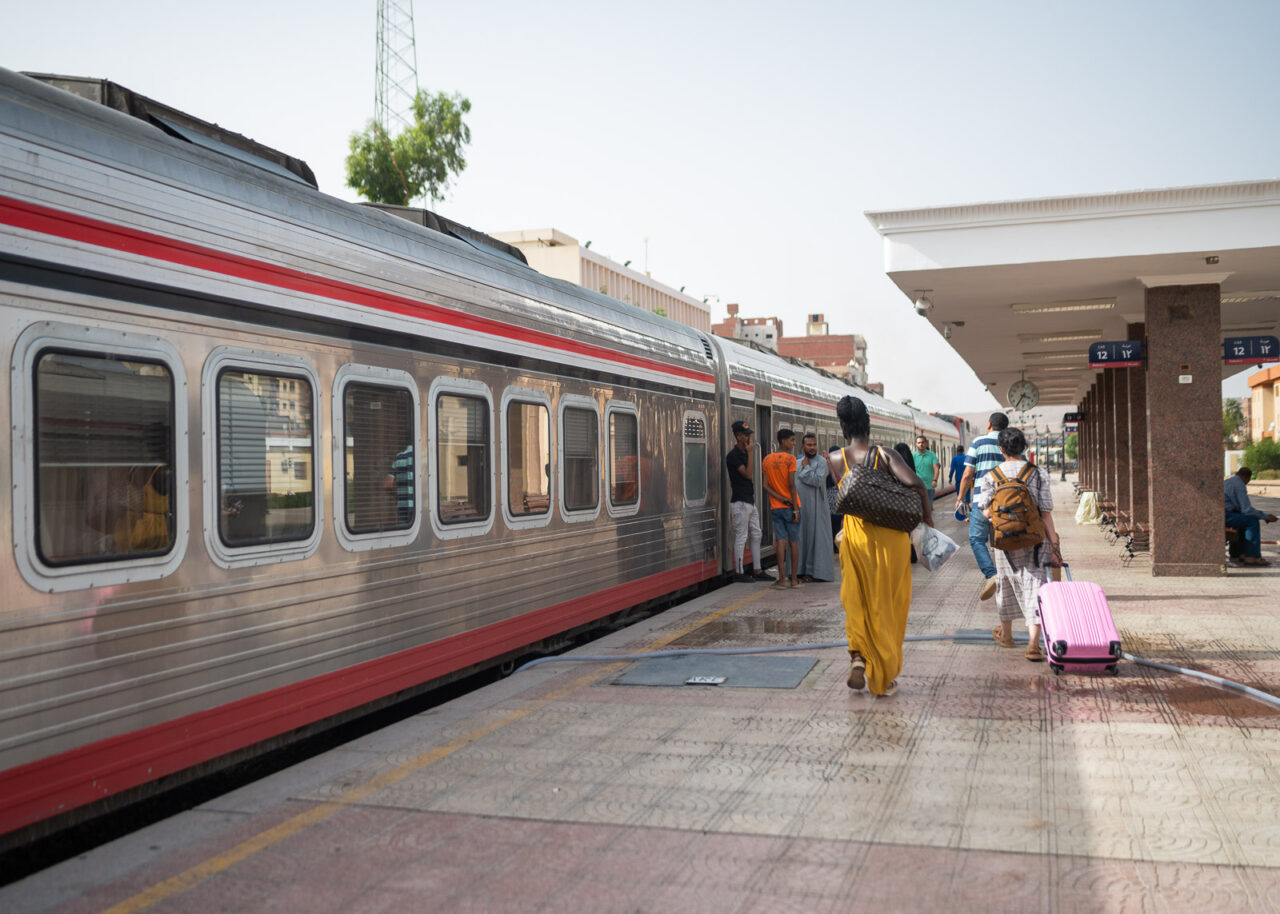
You can also take the deluxe sleeper train that runs from Cairo-Luxor-Aswan, or you can take an ordinary train.
On the deluxe sleeper train you’ll have your own air-conditioned sleeping car with washbasin, soap, towel & clean bedding and a hot meal is included as part of your ticket (although people I spoke to said it wasn’t very edible). Sleeping cars have upper and lower births and fit two people of the same sex.
Tickets for the deluxe sleeper train can be purchased online up to 30 days in advance and you can print out your ticket before you go.
To book, visit the Watania sleeping trains website https://wataniasleepingtrains.com/Home. A single birth one-way ticket between Cairo and Aswan costs $80, or a double birth for two is $120. If the online system doesn’t work, you can contact Ernst/Watania via email [email protected] or call +20 2 25761319. They’ll give you a booking number and you can collect your tickets at their office in Cairo.
Ernst/Watania has ticket offices at Cairo, Luxor and Aswan stations, so you can show up in person to buy a ticket. Try to buy your tickets at least a couple of days in advance because the sleeper trains can get booked up. If you’re traveling during busy holiday periods, you’ll want to book even further in advance. Tickets bought at the ticket office must be paid for in cash in foreign currency – US dollars, euros or pounds sterling. Cards aren’t accepted.
Besides booking online, you can also book Egypt sleeper train tickets through various Egyptian travel agencies, who will usually charge you a small fee of $10-$15 on top. Expect to pay additional fees if you would like delivery of tickets to your hotel, or for someone to meet you with the tickets at the airport or train station. They may also charge a credit card processing fee if you want to pay by card.
Some package tours will include the sleeper train on their itinerary so you won’t have to worry about buying tickets. They’ll take care of everything for you and provide a chaperone to and from the station.
For all other ordinary trains, you can check times and buy tickets on the Egypt National Railways website. https://enr.gov.eg/ticketing/
Ordinary train tickets can be purchased in Egyptian pounds at the ticket offices in Cairo Ramses train station. You can also use the self-service ticket machines, which are available at Cairo, Alexandria, Luxor & Aswan stations. The machines have English language capabilities and usually accept overseas credit cards.
A Final Word…
So there you have it. A very comprehensive look at all the things to do in Aswan. It’s a place that’s definitely worth your time. If you want some help planning a DIY itinerary, I’ve put together this 7 day Egypt itinerary for first-timers, which includes Cairo, Aswan, Abu Simbel and Luxor!
More Egypt blog posts:


